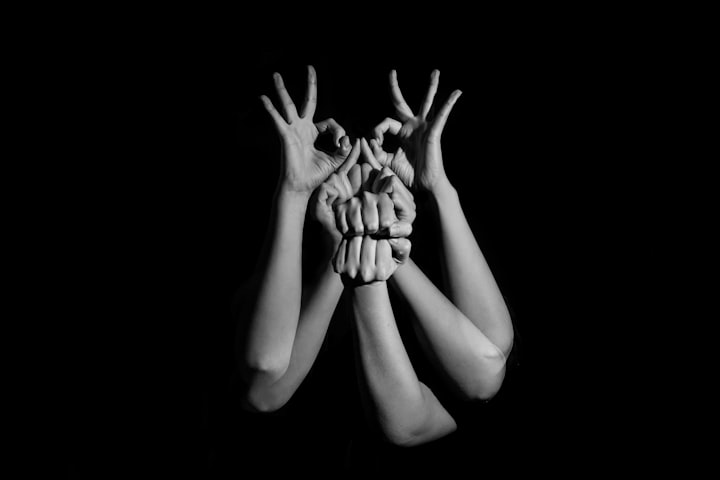
Monstrous myths have permeated cultures across the globe, serving as both cautionary tales and embodiments of collective fears and desires. The interpretations of these mythical creatures vary greatly between Eastern and Western traditions, reflecting the unique cultural, historical, and religious influences that shape their representations. In this article, we delve into the intriguing world of monstrous myths, exploring how Eastern and Western societies have conceptualized and personified these creatures throughout history. By examining the symbolism, significance, and archetypes of monsters in each cultural framework, we aim to uncover the diverse perspectives and narratives that have shaped our understanding of the monstrous in different parts of the world.
Introduction to Eastern and Western monstrous myths
Monstrous myths are like that time you convinced yourself you could handle watching a horror movie alone at night – terrifying and unforgettable. These tales of creatures beyond the realm of normalcy have been ingrained in Eastern and Western cultures, each with their own unique flavors of fright.
Defining monstrous myths
Monstrous myths are essentially the bedtime stories you wish you could unhear, featuring beings that make your average boogeyman look like a puppy. These creatures, ranging from creepy crawlies to monstrous giants, embody our deepest fears and fascinations.
Cultural fascination with monsters
Monsters have been captivating human imagination since cavemen doodled creatures on cave walls. Whether it's the allure of the unknown or the thrill of facing our fears, humans can't seem to get enough of these terrifying and tantalizing tales.
Cultural influences on monster representations
To understand monsters in Eastern vs Western cultures, one must delve into the historical contexts and cultural beliefs that shaped these nightmarish narratives.
Historical context and societal beliefs
Eastern and Western interpretations of monsters are as different as pineapple on pizza and traditional margherita. Historical events, societal norms, and collective beliefs have all played a role in shaping how these monstrous myths came to be.
Religious influences on monster depictions
Religion has also had its say in the monstrous mixtape, with Eastern and Western beliefs infusing monsters with symbolism and significance that goes beyond mere scares. From heavenly protectors to hellish fiends, monsters in both cultures reflect religious ideologies.
Symbolism and significance in Eastern monstrous myths
In Eastern monstrous myths, creatures like Yokai in Japanese folklore and demonic entities in Chinese mythology carry deep symbolic meanings that offer insights into cultural values and beliefs.
Yokai and their symbolic meanings in Japanese folklore
Yokai are not just your run-of-the-mill monsters – they embody everything from nature spirits to vengeful ghosts, each with its own tale to tell. These creatures serve as cultural mirrors, reflecting the values and fears of Japanese society.
Demonic creatures in Chinese mythology and their cultural significance
Chinese mythology is teeming with demonic beings that strike fear into the hearts of mortals. These creatures, often representing aspects of human nature or cosmic forces, carry layers of symbolism that shed light on Chinese cultural beliefs.
Symbolism and significance in Western monstrous myths
In Western cultures, monsters from Greek and Roman lore to Christian narratives are laden with symbolism that goes beyond mere scares, offering insights into societal values and religious beliefs.
Greek and Roman monster symbolism in Western culture
From the Hydra to the Minotaur, monsters in Greek and Roman mythology embody primal fears and societal taboos, serving as cautionary tales or reflections of human nature. These creatures continue to influence Western culture and storytelling.
Christian influences on Western monster narratives
Christianity has left its mark on Western monster myths, with demons, vampires, and other creatures of the night taking on symbolic meanings rooted in religious teachings. These monsters often represent moral dilemmas, spiritual battles, or the eternal struggle between good and evil.
Contrasting monster archetypes in Eastern and Western folklore
When it comes to monsters, East and West bring their own unique flair to the party. From dragons to vampires, the differences in monster archetypes reveal contrasting worldviews and cultural values. While Western monsters like werewolves embody fears of the unknown and primal instincts, Eastern monsters such as Yokai from Japan often symbolize nature's forces and spiritual beliefs. Whether it's the menacing Grendel from Beowulf or the mischievous Kitsune from Japanese folklore, these monsters reflect the fears and fascinations of their respective cultures.
Unique characteristics of Eastern vs Western monster designs
Eastern and Western monster designs showcase distinctive features that set them apart in the world of myths and legends. Western monsters tend to be more anthropomorphic, taking on humanoid forms with added beastly traits. On the other hand, Eastern monsters often draw inspiration from animals, blending characteristics in imaginative ways. Whether it's the fire-breathing Western dragon or the shape-shifting Eastern Nue, these monster designs not only captivate our imagination but also reflect the cultural aesthetics and artistic traditions of their origins.
Evolution of monster myths through storytelling traditions
Monsters have evolved alongside human societies, shaping and being shaped by the stories we tell. The rich tapestry of folklore and history influences how monsters are perceived in different cultures. From the heroic battles of Western knights against fearsome beasts to the cautionary tales of Eastern spirits haunting ancient forests, the evolution of monster myths reflects changing beliefs, values, and societal norms over time.
Political and social allegories in monster narratives
Monster narratives often serve as more than just tales of terror—they can be powerful allegories for political and social issues. In the West, monsters like Frankenstein's creature embody fears of unchecked scientific progress and societal rejection. In the East, monsters like the Nian in Chinese folklore symbolize the triumph of unity and courage over adversity. Through these allegorical lenses, monsters become mirrors that reflect the anxieties and aspirations of the societies that create them.
Contemporary reimaginings of traditional monsters in popular culture
In today's globalized world, traditional monsters find new life in popular culture through modern interpretations and adaptations. From Hollywood blockbusters to manga and anime, iconic monsters like vampires and demons are reimagined in fresh and exciting ways. Whether it's the brooding vampires of Twilight or the kaiju battles in Pacific Rim, these contemporary reimaginings add layers of complexity and relevance to age-old monster myths.
Cross-cultural exchanges and hybrid monster creations
As cultures collide and blend, we witness the birth of hybrid monsters that transcend traditional boundaries. From the fusion of Western zombies with Eastern ghosts to the creation of new mythical beings inspired by a global mix of folklore, cross-cultural exchanges create a fertile ground for innovative monster creations. These hybrid monsters not only bridge cultural divides but also spark creative dialogues that enrich our understanding of monstrous myths across diverse traditions.
About the Creator
Relang
I am a passionate novelist and imaginative writer my words dance across the page, painting vibrant tapestries of emotion and intrigue.






Comments
There are no comments for this story
Be the first to respond and start the conversation.